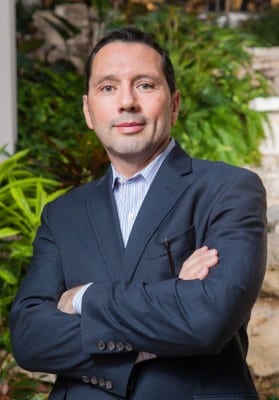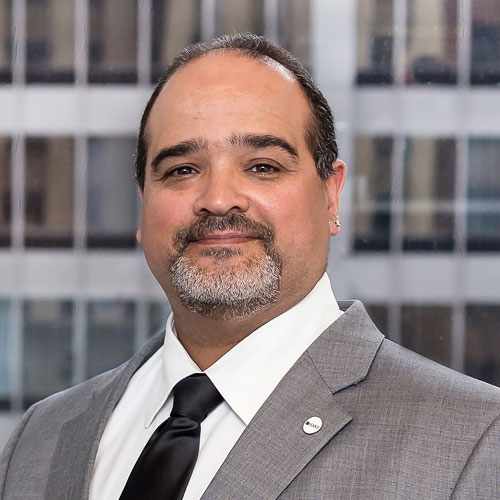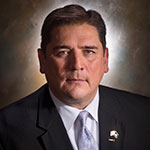Remember when facial recognition technology first appeared about twenty years ago? During sales demonstrations, the computer would sometimes pull up the correct picture, but would also read three or four others that might or might not look anything like the subject. The utility for facial recognition technology was usually pushed as a security tool. Set up a camera near the door of a store, for example, and you might stop a few convicted shoplifters from walking in.

Steven Rodriguez, chief operating officer at Asure Software, laughs at that memory. “It’s changed a lot since then,” he says. “For us, it’s about helping companies keep track of and optimize when and where their employees work.”
Asure Software, a workforce and workplace management company, has used facial recognition technology to create a new kind of time clock. It allows workers to use their mobile devices to punch in from remote locations. The device is turned toward the user’s face, and the built-in camera snaps a picture; the user literally takes a “selfie.” Facial recognition technology, combined with geo-location capabilities, can verify the employee’s identity and that he or she is where they are supposed to be at the correct time. Cloud-based software allows an employer to receive that information from anywhere around the globe.
“Because you’re able to see them,” Rodriguez says, “you can also check their appearance to make sure they look appropriate for work. In health care, for example, you might need to be sure a nurse is in uniform.”
In this day and age, with employees telecommuting, working flexible hours, and collaborating from locations around the world, such technology is proving vital to recruiting, managing, and retaining the best talent. On any given workday, approximately 35 percent of a company’s desks will sit empty. People are working from home, traveling, on client sites, or on vacation. At $10,000 per workspace per year, companies can save hundreds of thousands of dollars by knowing when and where their employees are and making better use of their workspace.
Rodriguez can rattle off a list of statistics illustrating how technology is changing how we work—and how those changes will continue. “Telecommuting has expanded 73 percent over the past decade,” he says. “It’s estimated over 1.3 billion workers will be mobile by next year. In 2017, there could be more than nine hundred million tablets in use globally.”
The COO of the Austin-based company has absorbed all the crucial data on mobilization and globalization. He’s been studying how it applies to managing workers and assets for more than twenty years.
“I grew up with it,” he says. “It was my second job out of college, back when workforce management was all about outsourcing payroll and human resources. They say after ten thousand hours doing something, you become an expert. I’d done that, so I decided to stay in the same place.”
After a string of executive positions in global human resources, he launched his own consulting firm, Human Capital Management, in Dallas. In 2011, he was doing consulting work for Asure, and CEO Pat Goepel soon asked him to come on board as COO.
In the four years since, Rodriguez has seen the company steadily grow. Asure now has 5,000 clients in 80 countries, including such prominent names as Aetna, Bank of England, Deutsche Bank, H&R Block, KPMG, Merck, Pfizer, Staples, and Wells Fargo. Revenue was $8 million the year he was hired; 2014 revenue guidance is between $27 million and $28 million. And the number of employees has climbed from 30 to 135.
Core to Asure’s success is its leadership position in bringing cloud-based solutions to the workforce and workspace management industries. All of Asure’s solutions leverage the cloud, which allows companies to access their information anytime, anywhere from a laptop, a tablet, or a mobile device. From Texas to Tokyo, companies and their employees can track time and attendance, schedule employee shifts, reserve meeting room spaces, and track space utilization and employee assets—all in a single platform.
In addition to Asure’s software solutions, clients can also purchase kiosks and touch panels, which are mounted outside central work areas and conference rooms, to help workers easily find and reserve meeting rooms and other work spaces. It creates a modern, tech-savvy vibe in today’s workplace, and employees are ultra-productive when they have the space and the assets they need to get their jobs done.
“At the end of the day, we help companies manage their mobile workforces in a highly effective way,” Rodriguez says. “You’ll know when and where your employees are working. And you’ll gain valuable insights into how your labor dollars and your space are being used. Do you have sixty thousand square feet when you really need just forty thousand? Are you paying overtime when you have employees on the bench? We can let them know. And, they can save millions of dollars when they better manage their real estate and their labor dollars.”
Employees appreciate the technology, too. Asure’s software makes it easier for them to telecommute or work flexible hours. In addition to reserving work spaces, employees can log on to a site to check how many hours they’ve worked in a week, what their schedule is, or to request time off. “Our solutions work together to help companies attract and keep talent, especially in a mobile world,” Rodriguez says.

